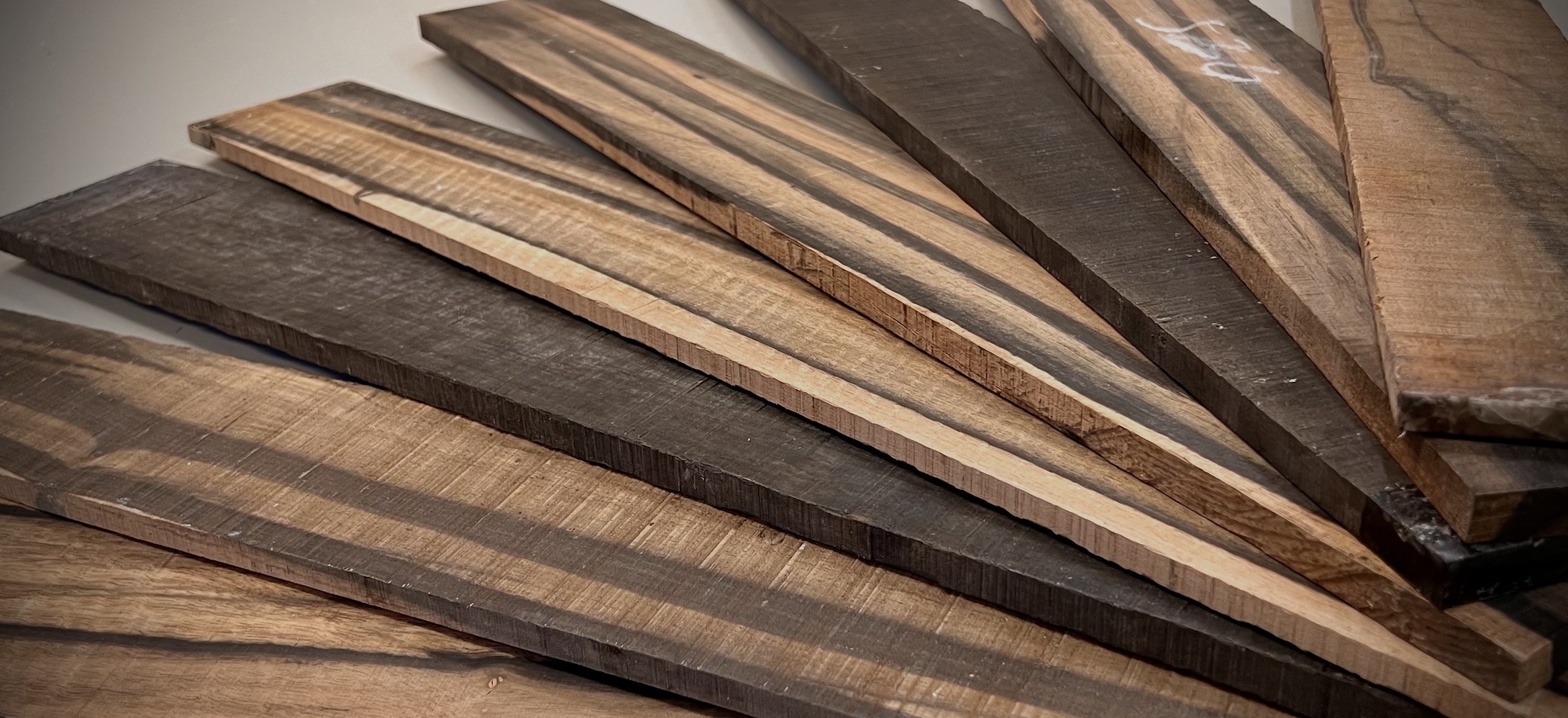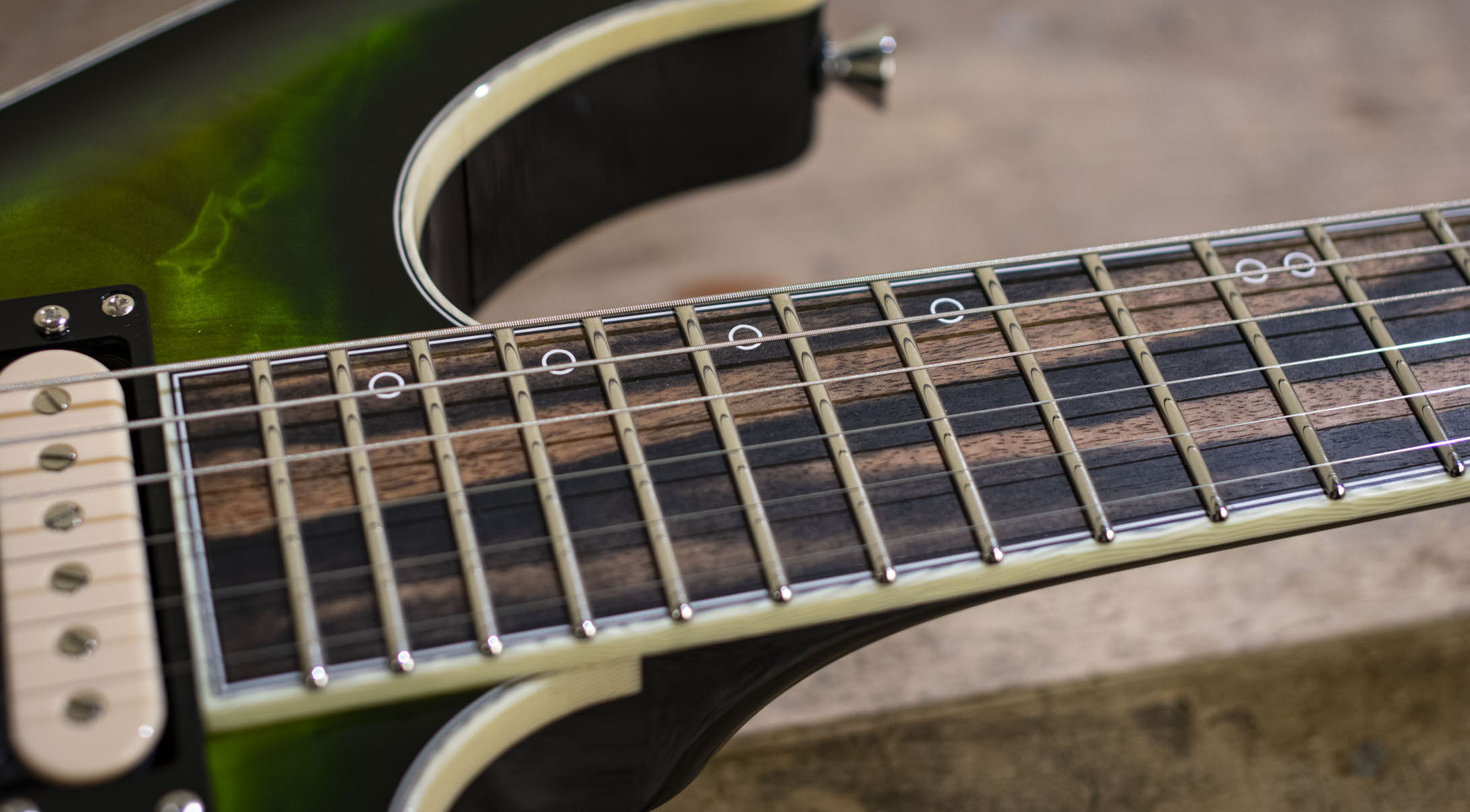A wood that repels evil spirits?
The extraordinary strength and deep black colour (let’s talk about the colour in more depth later!) have made ebony wood often the topic of myths and legends. It has been used to repel evil spirits. Even drink glasses have been made from ebony wood to protect the user from being poisoned.
For master craftsmen only
Various species of ebony trees grow native on dry and intermediate zones in Western Africa, Malaysia, Sri Lanka, Southern India and Indonesia.
Historically, this exquisite wood was available only to master craftsmen because of the nature of the material and its great expense. The use of it has a long history of use in cabinetwork, decorative items, crucifixes – and in a wide array of musical instruments.
A wood species that does not float
Ebony is one the very few wood species that does not float on water, but sinks to
the bottom. It is heavy, dense and has superior bend strength as compared to any other wood species. Ebony finishes extremely smooth and it is very durable. It is the only fingerboard wood that can take decades of wear and tear in violins and other fretless instruments.
Whereas a fretted instrument doesn’t necessarily need a fretboard material so extremely resistant to wear, ebony does have unique qualities that make it a fantastic material for fretboards and certain other guitar parts.
Responsiveness needs to be controlled
Certain wood species, such as spanish cedar, are extremely responsive and vibrant. Responsiveness is a great thing, but in certain parts of the guitar – such as neck – it needs to be controlled, too. The fretboard (regardless if it’s made of ebony, rosewood, maple or birch) adds a laminated structure to the length of the neck and makes the neck stiffer.
Not just for the looks
There is another part in my guitars where ebony serves well. See, the headstock of a guitar vibrates, too. Perhaps you’ve noticed that all my spanish cedar necks have a thick ebony overlay on them. In this particular use, ebony does miracles to even out the resonance peaks of the neck by adding bend strength and density to the headstock.
In other words, the ebony headstock overlay is not there just for aesthetic purposes – it serves an essential structural function.
The tone of ebony?
When compared among our choice of fretboard materials, an ebony fretboard could be described as slightly brighter sounding than rosewood, but not quite as bright as maple or arctic birch.
How to clean an ebony fretboard?
Check out our online Maintenance Guide for detailed instructions how to clean and maintain your ebony fretboard in good condition.

But… ebony is black, right?
Endangered, for a good reason
As a result of unsustainable harvesting, many species yielding ebony have become endangered. Africa, as one example, has had most of its indigenous ebony cut down illegally over the past centuries.
There is another reason, though, perhaps even more severe and sad, however, to cause the fact that ebony has become endangered. Remember, in the beginning of this article I mentioned about the myths related to the black colour of ebony? Well – that’s what we all thought. We thought ebony is black, but it is only a small fraction of the truth.
Reality check
The reality is that only a small percentage of ebony is jet black – and the rest is striped or clouded with various shades of light browns, darker browns, greys and black.
Hats off to Bob Taylor
It is not so long ago that the guitar industry has become aware of what has happened. Bob Taylor of Taylor Guitars has done tremendous work in educating the wood suppliers, the guitar industry, the players and all guitar loving people of the truth of the matter.
Centuries of wrongdoing…
The sawmill industry in Africa has supplied black ebony to various industries using ebony, including guitars, for centuries. And the musical instrument industry wanted premium ebony. Black ebony, that is. What they (we) didn’t know is that the only way to tell if a certain tree is black or not was to fell down that tree and have a look. And… it hurts to say this… in 80-90% of the times it wasn’t black. And those trees were left to rot! This went on for centuries. And why? For the vanity of the western world.
Finally things are changing for real
Fast-forwarding to today. Now we all know that ebony can be black, but most often it is something else. And to my eyes, the colourful pieces of ‘exotic ebony’ (as it’s often called) are often even more beautiful than the black stuff.
Your choice
The mechanical or tonal properties of ebony are the same, regardless the colour. So, a long story short – when you order a guitar, you can choose. Ebony can be black, have a bit of cloudy colour mixed in, be figured, striped or marbled, you name it! Every piece is unique. The black and somewhat black ebony is still there, among all the rest – and you get to handpick yours.
The truth is, however, that the colour is irrelevant. The bottom line – the seriously important news – is that ebony is nowadays cut in a more responsible, ethically acceptable way.

The paradox of growth
The use of ebony in certain parts of high end musical instruments has proven to be extremely difficult to find a substitute for. The search goes on. We take part to research projects trying to find new, sustainable materials, and use local wood as much as possible in whichever guitar parts it is suitable for.
A hard lesson for us all to learn
The true solution to the exploitation of our forests and other natural resources of our planet is obviously to consume less. Changing from one material to another doesn’t help as long as the total amount of consuming keeps on growing. It will be a hard lesson – perhaps one of the hardest ever – for the human kind to learn.
The individual luthier can show an example
In this regard, I believe our tribe – the individual luthiers, living simple lives, making small numbers of high quality musical instruments to be loved and played by their owners and bringing joy over generations – can show an example.
Forest Stewardship Counsil
With careful planning and responsible actions, ebony can remain in our choice of wood options for years to come. We buy tropical wood only from FSC (Forest Stewardship Counsil) certified suppliers, with whom we’ve worked with since the 1990’s.
A warm welcome for CITES
All the ebony parts of Ruokangas guitars are made of FSC certified African ebony (Diospyros Crassiflora Hiern). Ebony wood does not yet require CITES documentation, but this is expected to change.
We, among our peers give a warm welcome for this change. Ebony, just as all the other endangered tropical wood species, need protection – and we want to take part in protecting whatever little is left of our beautiful planet.